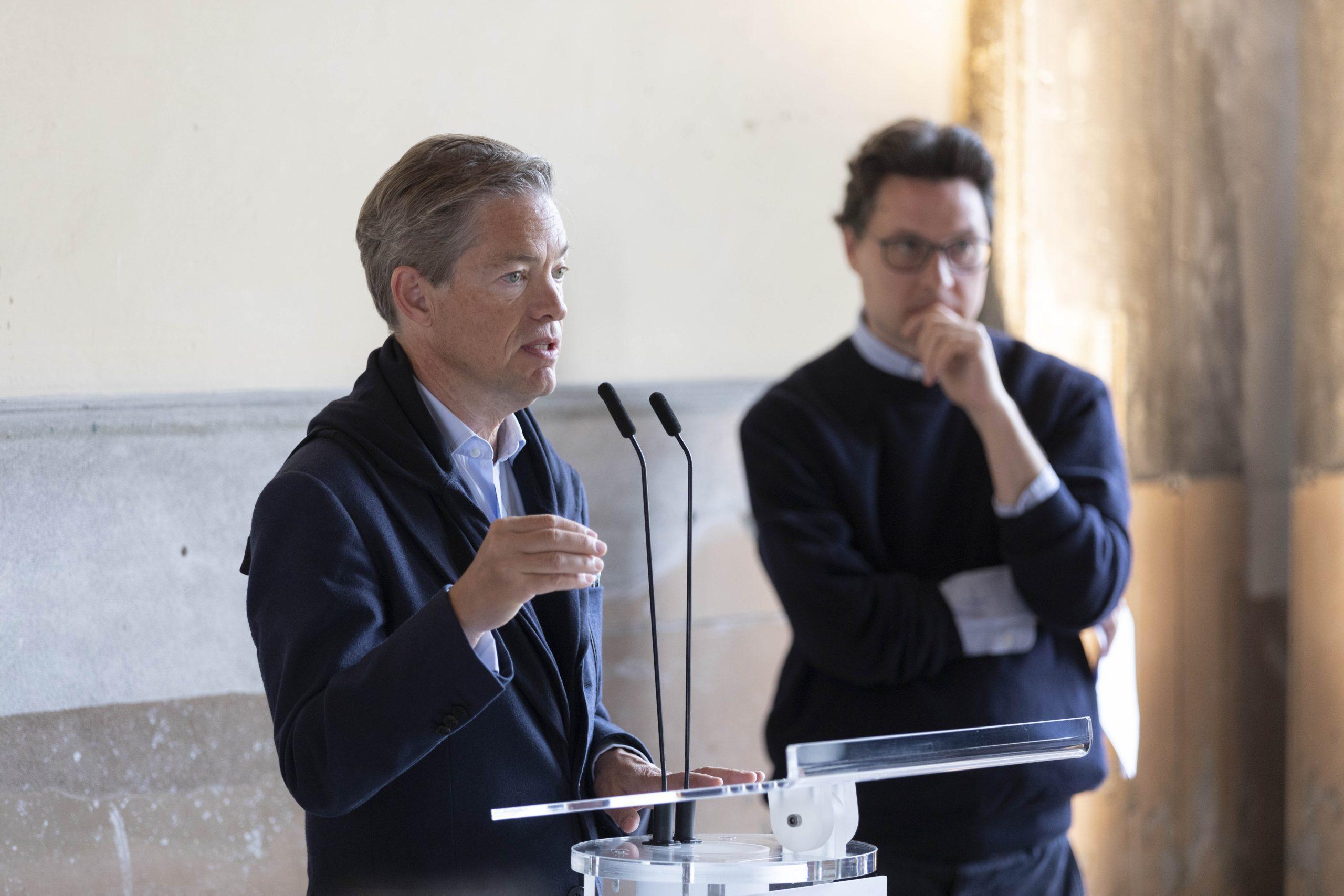John Akomfrah, Philippe Starck, Anish Kapoor, Giulia Andreani, Alison Cole and Amos Gitai are just some of the many personalities who will be speaking during the three-day Art for Tomorrow event run by The Democracy & Culture Foundation. President Achilles Tsaltas reveals what will happen at Palazzo Diedo from 5 to 7 June 2024
The countdown has begun in Venice for the 2024 edition of Art for Tomorrow, the conference to be held in Palazzo Diedo, home of the Berggruen Institute, and which also involves Marsilio Arte as a partner. Artists, museum directors, filmmakers, curators and architects will discuss the theme of imperfect beauty during a series of panels focusing on the issues of the contemporary world and accessible by registration.
Achilles Tsaltas, president of The Democracy & Culture Foundation, the institution that runs the event, traces the history of the foundation and explains the goals of Art for Tomorrow.
Art for Tomorrow is one of the events created and run by The Democracy & Culture Foundation. Would you briefly tell us about the history of the Foundation and the fields it focuses on?
The Foundation was created in 2019. Since then, we’ve been focusing on bringing together culture and democracy, as we all believe they’re so intertwined. Our team now runs two annual conferences, the Athens Democracy Forum in association with The New York Times, and Art for Tomorrow. We see them as platforms and speakerphones for powerful initiatives and impactful projects from across the world ‒ but also for our own projects. The Foundation works with a wide range of partners to support the participation of young people in decision circles, advocate for a permanent peoples’ assembly in Europe, but also recognize and foster democratic leadership among politicians, the next generation of leaders, and artists.
The next Art for Tomorrow will take place in Venice, at Palazzo Diedo. What are the origins and the mission of Art for Tomorrow?
Art for Tomorrow will actually celebrate its 10th edition next year. Its focus and its mission have considerably changed since 2015, reflecting the many social challenges our societies are facing. Back in 2015, it was designed as an arts leaders network. But we saw the need to focus on social impact and for more interaction between artists, activists, nonprofits as well as galleries and museums and political representation for instance. I’m personally very proud we’ve been able to turn a corner.
Art for Tomorrow is now a gathering of very different voices, and it’s designed to grasp the major issues we are facing today: from the climate crisis to social mobility, the role of cultural or political institutions to that of civil society ‒ all this through the lenses of arts and culture. To me, we’re creating a space that not only fosters interactions, but also impact.
The Venetian Art for Tomorrow will be inspired by the concept of imperfect beauty. Can you tell us something about the speakers who will discuss this topic and how they will do it?
The team is actually very excited about this year’s theme. We also call it the pitfalls of beauty. It’s bringing many questions ‒ and I’m sure very different answers. Many of your readers can probably relate: we’ve all experienced visiting an endangered site, a very crowded museum exhibition, or been struck by conservation or restoration issues. We’re bringing different voices together for this: Toto Bergamo Rossi of the Venetian Heritage, Hermann Parzinger of the Prussian Cultural Heritage Foundation, and Olga Kefalogianni, Greek Minister of Tourism ‒ among others. Sustainability, heritage policies, and in the case of Venice flooding and erosion… You can imagine the vast array of areas we will cover with those lenses. And I’m sure ecological artist Thijs Biersteker will broaden our horizons. The rest you’ll have to discover during the conference, in Venice or online.
The effects of the overtourism and climate crisis are tangible in Venice. What do you think cultural institutions and artists should concretely do to face this emergency situation?
Lead the way! This is a heavy burden but one could argue this is one of the many roles of arts. Now of course, institutions and artists are often faced with tight budgets and constraints. They have always been at the forefront of our societies.
At the Foundation, taking a cue from our DNA, we don’t shy away from bringing together opposing points of view for real dialogue in search of solutions. Last year, for example, our Museums panel featured Brooklyn Museum Director Anne Pasternak on the one hand with Extinction Rebellion Co-Founder Clare Farrell on the other. Moderated fairly and skilfully by journalist Farah Nayeri, it is through such candid dialogue that we can foster better understanding between each other and work towards impactful recommendations and solutions.
Interview by Arianna Testino
https://www.artfortomorrow.org/
BIO
Achilles Tsaltas is the President of the Democracy & Culture Foundation, an independent, nonprofit entity he co-founded in 2019 to further the work of two New York Times conferences ‒ Athens Democracy Forum and Art for Tomorrow. With a mission to empower societies and people through citizen engagement and better governance, the Foundation runs projects and conferences fostering policy-making, citizen participation, and education & leadership. With over 30 years of experience in media, Achilles has been responsible for creating and managing strategic partnerships with some of the world’s most renowned corporations, including News Corporation, The International Herald Tribune, and The New York Times.
Cover photo: Achilles Tsaltas. All rights reserved ‒ The Democracy & Culture Foundation
Related Articles






